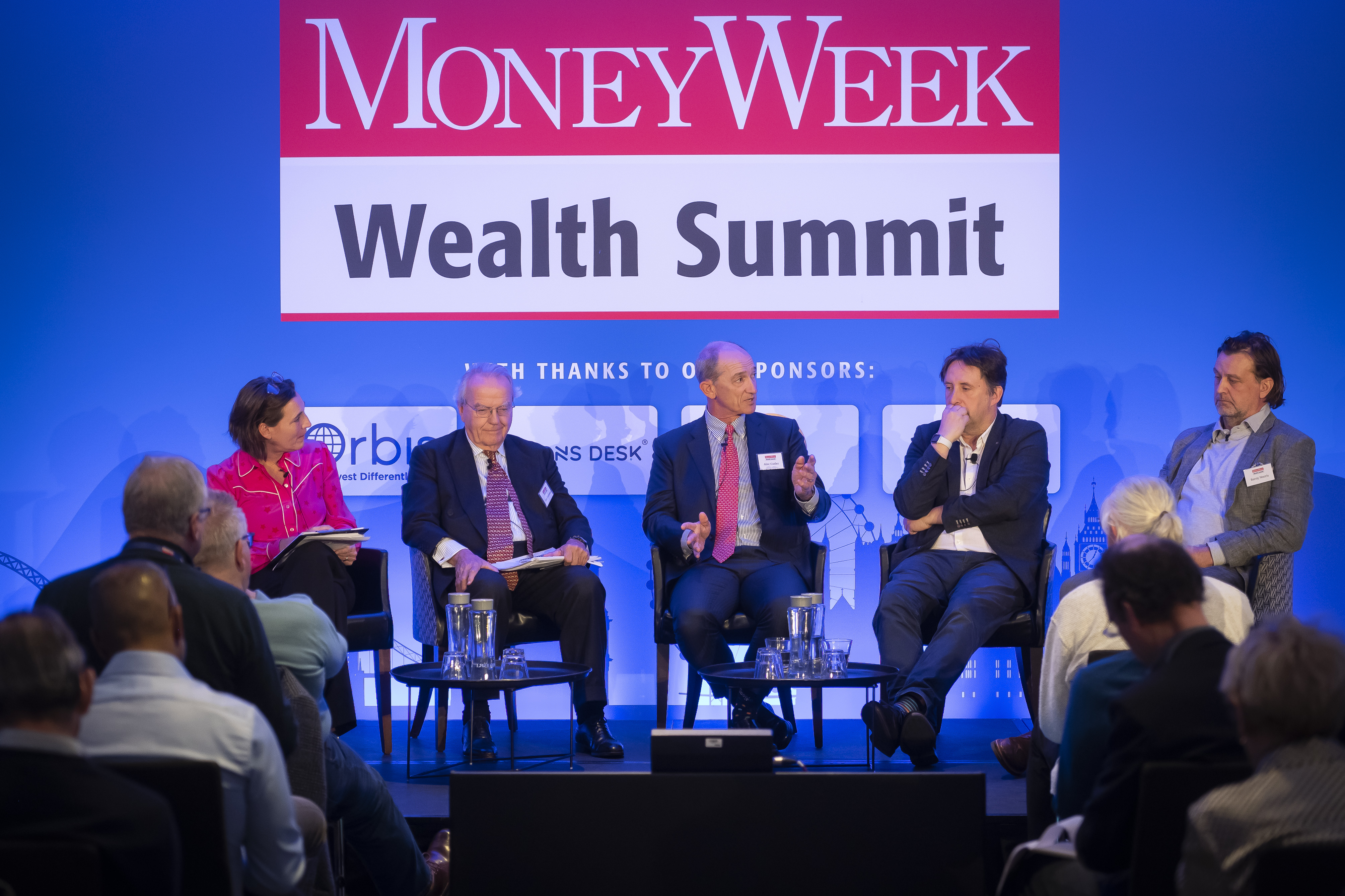Fundsmith Equity: a setback for a high-quality portfolio
Rupert Hargreaves explains why investors should focus on Fundsmith Equity’s process rather than its losses


The Fundsmith Equity fund consistently ranks as one of the most popular equity funds among investors in the UK, and it’s easy to understand why.
Managed by star fund manager Terry Smith, since inception on the 1st of November 2010, the fund has produced an annualised return of 15.6% compared to 11.3% for the MSCI world index (in sterling).
However, 2022 was by far the worst calendar year of performance for the fund since its launch, both in absolute terms and relative to the global stock market.
MoneyWeek
Subscribe to MoneyWeek today and get your first six magazine issues absolutely FREE

Sign up to Money Morning
Don't miss the latest investment and personal finances news, market analysis, plus money-saving tips with our free twice-daily newsletter
Don't miss the latest investment and personal finances news, market analysis, plus money-saving tips with our free twice-daily newsletter
It lost 13.8% last year compared to a loss of -7.8% of its benchmark. This year, the fund has performed marginally better, although it has still underperformed. In the six months to the end of June, Fundsmith returned 8.5% compared with 8.9% for the index.
Fundsmith's performance in 2023
Writing in his half-year letter to investors, Smith explained Fundsmith’s holdings in Waters Corp, Mettler-Toledo International, and cosmetics group Estee Lauder weighed on returns in the first half.
“Waters and Mettler-Toledo have both been affected by the slowdown in laboratory expenditures post the pandemic. In neither case are we bothered by this. In fact, we hope it presents an opportunity for us to buy more,” the fund manager explained in the update.
But he seemed more concerned about the performance of Estee Lauder.
He said: “While domestic travel has returned, it seems that Chinese consumers are buying watches, handbags, and other luxury goods first which it was harder to shop for online during the lockdown. It has revealed some severe weakness in Estée Lauder’s supply chain with no manufacturing capability in Asia.”
This “debacle” could lead to Estee Lauder’s ejection from the portfolio, unless the company can turn the situation around. Smith doesn’t often sell holdings, but he’s been quick to eject companies from Fundsmith’s portfolio if they start to lose direction.
For example, Smith recently dumped the fund’s position in Amazon, locking in a loss after first buying the stock in July 2021. In his half-year update, the fund manager explained that he’d made the decision to sell after the group’s new CEO, Andy Jassy seemingly decided to push the business in a different strategic direction.
Smith said: “It is always easier to talk the talk than it is to walk the walk and the CEO’s pronouncement that he wanted Amazon to seek routes to get bigger in grocery retail ran counter to all these principles.”
“Where companies choose to invest outside a powerful core franchise in which they already have expertise we believe they are likely to destroy value, and especially so where they are entering a sector which already has poor returns,” he added.
Buy and hold quality
Fundsmith has always been focused on buying and holding quality companies, a strategy explained by Fundsmith’s three-step investment strategy (1. Buy good companies; 2. Don’t overpay; and 3. Do nothing) is the best way to approach the market.
Fundsmith has even gone so far as to write an ‘Owner's manual’ to explain to its investors what it’s trying to achieve and how it will achieve it.
This whole process is designed to help investors focus on the fundamentals of the companies in the underlying portfolio, and ignore short-term market conditions.
One of the ways Smith does this is with a table in the Fundsmith annual report showing “what Fundsmith would be like if instead of being a fund it was a company and accounted for the stakes which it owns in the portfolio on a ‘look-through’ basis.”
On this basis, at the end of 2022, Fundsmith as a company had a return on capital employed - a measure of profit for every £1 invested in the business - of 32%, double the average of the FTSE 100 and nearly double the average of the S&P 500. It also had a gross profit margin of 64% compared to a mid-40s range for the indices.
These healthy margins have helped the companies in the portfolio absorb higher manufacturing and input costs that have hurt so many businesses over the past two years.
As Smith explained in his note, “Procter & Gamble Co used to ‘make things’ for $0.50 and ‘sell them’ for $1.00, but now it costs $0.53 to make them. McCormick & Co Inc used to make things for $0.58 and sell them for $1.00, but now it makes them for $0.63. Estée Lauder used to make things for $0.20 and sell them for $1.00, now it costs $0.28 to make them.”
“This still leaves our companies’ gross margins way above those of the market average, which means their bottom lines are better protected, but they cannot completely offset these headwinds.”
But despite rising costs and squeezed margins, Smith isn’t changing strategy.
The fund’s best-performing holdings in the first six months were Meta (up 140%), Microsoft (up 40%) and L’Oreal (up 30%).
The author holds the Fundsmith Equity fund.
Get the latest financial news, insights and expert analysis from our award-winning MoneyWeek team, to help you understand what really matters when it comes to your finances.

Rupert is the former deputy digital editor of MoneyWeek. He's an active investor and has always been fascinated by the world of business and investing. His style has been heavily influenced by US investors Warren Buffett and Philip Carret. He is always looking for high-quality growth opportunities trading at a reasonable price, preferring cash generative businesses with strong balance sheets over blue-sky growth stocks.
Rupert has written for many UK and international publications including the Motley Fool, Gurufocus and ValueWalk, aimed at a range of readers; from the first timers to experienced high-net-worth individuals. Rupert has also founded and managed several businesses, including the New York-based hedge fund newsletter, Hidden Value Stocks. He has written over 20 ebooks and appeared as an expert commentator on the BBC World Service.
-
 Boost for over 100,000 families on Child Benefit as new HMRC payment system rolled out
Boost for over 100,000 families on Child Benefit as new HMRC payment system rolled outThousands of households will no longer have to pay the dreaded High Income Child Benefit Charge through self-assessment
-
 Are you being haunted by the ghost of Christmas past? How festive cutbacks could boost your long-term wealth
Are you being haunted by the ghost of Christmas past? How festive cutbacks could boost your long-term wealthThe average family spends around £1,000 over the Christmas season. Here’s how much you could have gained if you had invested some of the money instead.
-
 Ashoka: A new, but reliable, trust you can count on
Ashoka: A new, but reliable, trust you can count onOur investment columnist, Max King, says tough times breed investment trusts like Ashoka, that you can trust.
-
 Halifax: House price slump continues as prices slide for the sixth consecutive month
Halifax: House price slump continues as prices slide for the sixth consecutive monthUK house prices fell again in September as buyers returned, but the slowdown was not as fast as anticipated, latest Halifax data shows. Where are house prices falling the most?
-
 Rents hit a record high - but is the opportunity for buy-to-let investors still strong?
Rents hit a record high - but is the opportunity for buy-to-let investors still strong?UK rent prices have hit a record high with the average hitting over £1,200 a month says Rightmove. Are there still opportunities in buy-to-let?
-
 Pension savers turn to gold investments
Pension savers turn to gold investmentsInvestors are racing to buy gold to protect their pensions from a stock market correction and high inflation, experts say
-
 Where to find the best returns from student accommodation
Where to find the best returns from student accommodationStudent accommodation can be a lucrative investment if you know where to look.
-
 The world’s best bargain stocks
The world’s best bargain stocksSearching for bargain stocks with Alec Cutler of the Orbis Global Balanced Fund, who tells Andrew Van Sickle which sectors are being overlooked.
-
 4 funds for global growth
4 funds for global growthFactor funds are a cheap way to build a portfolio with less bias towards technology or America, says David C Stevenson.
-
 Revealed: the cheapest cities to own a home in Britain
Revealed: the cheapest cities to own a home in BritainNew research reveals the cheapest cities to own a home, taking account of mortgage payments, utility bills and council tax